
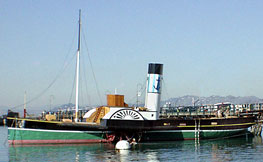
The blue anchor featured on the houseflag and funnels of Tyneside steam tugs in the early 20th Century provides a direct link with the Anderson family and it is still afloat...half a world away at Hyde Street Pier, San Francisco. On the preserved paddle tug Eppleton Hall (pictured here by courtesy of the San Francisco Maritime National Historical Park) it can be seen in the livery created when her last owners France, Fenwick took over the Anchor Steam Tug Company in 1920. In his book 150 Years of the Maltese Cross, published in 1993 by Tyne & Wear Tugs, John H Proud traces the North Shields tug-owning partnership of John Anderson (1836-1919) and Robert Chater in detail from c.1867 and tells how it was converted into a limited liability company - the Anchor company - in North Shields on May 25 1903. Kelly's Directory still lists a Robert Chater as manager as late as 1914 but the company's independent existence ended with the France Fenwick take-over in July, 1920, just one year after the death of John Anderson. Among the best-remembered Anderson & Chater tugs was the paddler Stag (1885), notable as being also fitted out for trawling with the North Shields fishing number 12 SN painted next to her name. The 1914-built Eppleton Hall, though never owned by the Anchor company, today provides a lasting link with the North Shields firm and, in turn, with the Andersons' shipowning days. And, like the Stag 29 years earlier, she was built just across the river Tyne at South Shields.

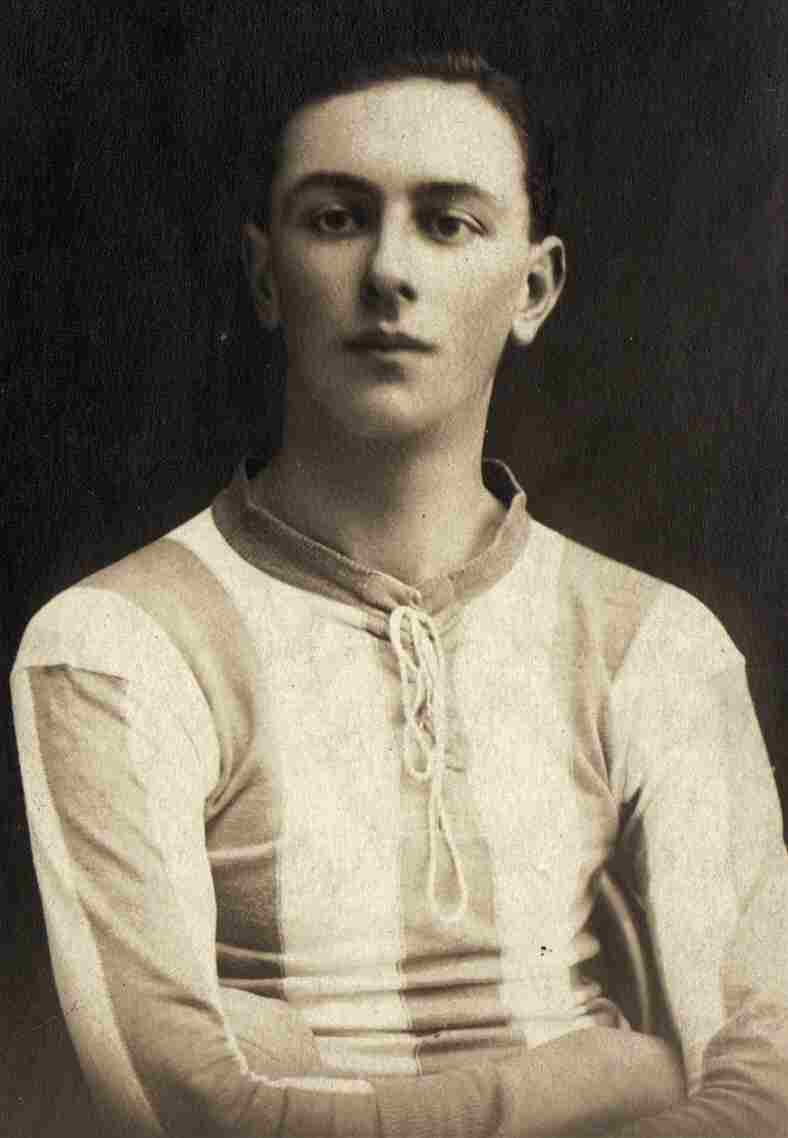

Four generations and 85 years separate these pictures but they are linked by a passion for football and illustrate two entirely different worlds. In colour, Fred Anderson (born 2001) is pictured here with his trophies after being voted Players' Player of the Year for the 2008-2009 season by his team-mates. Alongside him is his great grandfather George Anderson (1903-1979). George, a Newcastle United supporter, was a promising footballer but his playing days were cut short by a cartilege operation - manageable now but final then. The team picture itself, with George Anderson standing at extreme right, speaks volumes and provides a stark contrast between the 21st Century's satellite TV coverage and all the merchandising now associated with the game. These were the days when even individual churches could boast their own teams. This was Howard Street Presbyterian Church AFC in North Shields and the Minister is included in the picture (third from left) as the team celebrated a championship-winning run in season 1923-1924. Another club picture from the period can be seen below. Back in the 21st Century, midfielder Fred supports Arsenal and votes for winger Theo Walcott as his favourite player.
Winning recognition as one of Britain's top typists was the achievement of 27-year-old Doris Anderson (1906-1972) who went from the workaday North Shields income-tax office to London on March 24 1934 to win third prize out of an 18,000 entry in the National Typewriting Contest organised by the News Chronicle daily newspaper.
Two important books have been produced by the Anderson family. Roy Anderson (born 1936) is the author of White Star, the story of the shipping line which owned the Titanic. Published in 1964, it was widely acclaimed but is now out of print. Roy Anderson is also the author of The Violent Kingdom, the bloody history of the Anglo-Saxon kingdom of Northumbria, published in 1971 and since reprinted three times.
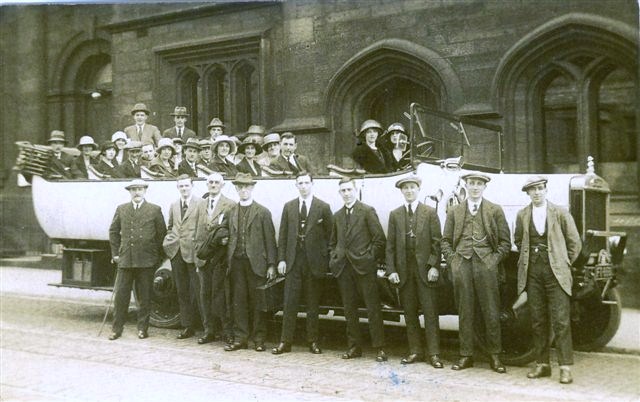
It's August Bank Holiday 1923...and this is how the members of Howard Street Presbyterian Church AFC in North Shields did it in style by hiring this splendid charabanc for an outing to Jedburgh in the Border Country. Alice Anderson (1905-2002), then still a Maguire, is seated third from the left in the dark hat next to the man she married seven years later - George Anderson (1903-1979), wearing the cap.
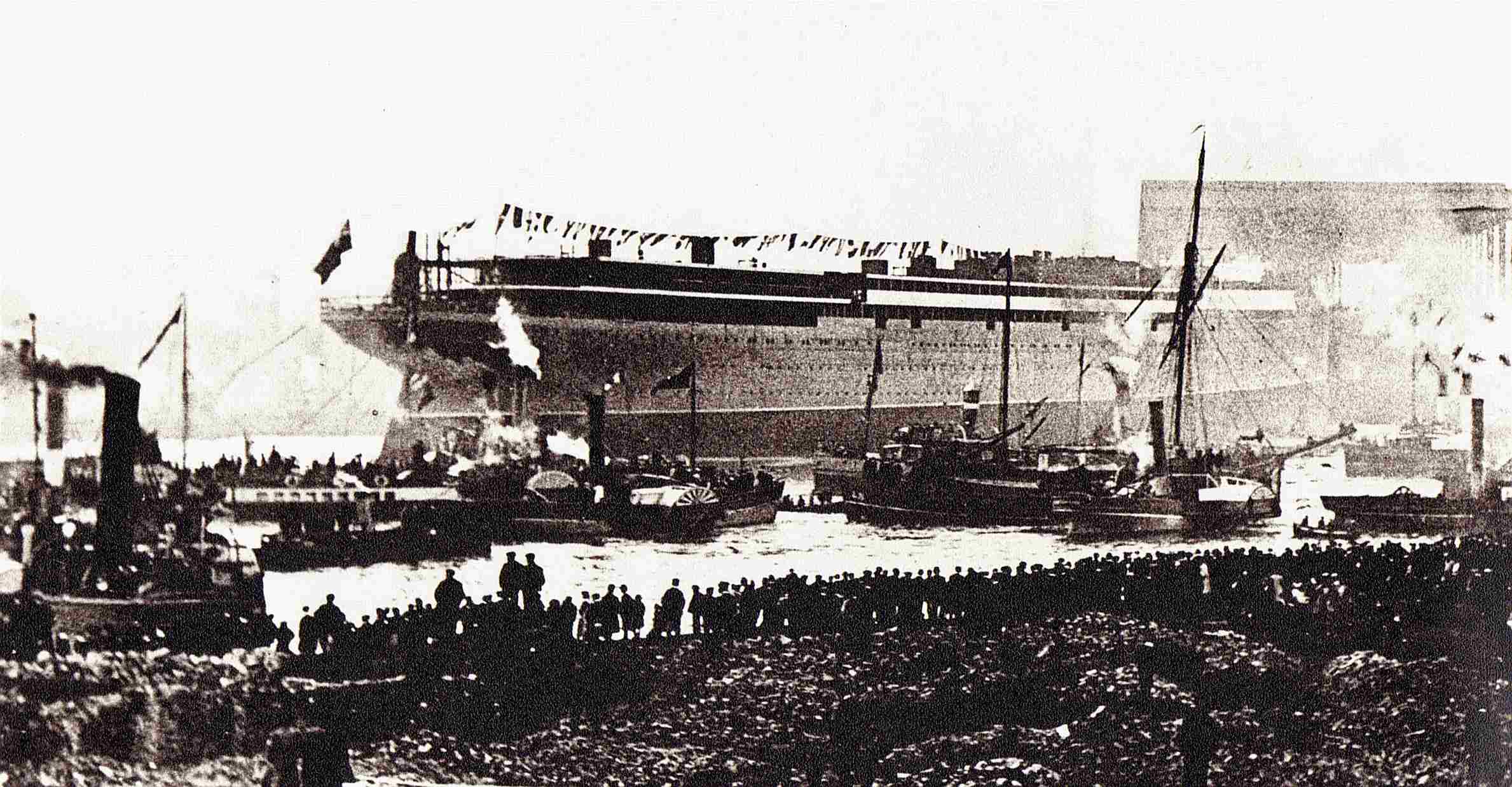
The floating of the world's largest ship was accomplished without a hitch...but it caused trouble for the Zephyr when a large piece of timber debris became jammed in one of her paddle wheels and brought her to a stop right in the fairway crowded with vessels attending the launch. Another tug was called to tow the Zephyr to a nearby buoy.
An Anderson was there to witness the scene on the day Tyneside's most famous ship, the legendary Cunard liner Mauretania, was launched from the Swan Hunter yard on September 20 1906. George Anderson (1878-1951) was aboard the paddle tug Zephyr - is she one of the vessels pictured here?- when the Dowager Duchess of Roxburgh named the North Atlantic flyer in the late afternoon and the day made such an impression on him that he was still recounting the events to his grandson Roy more than 40 years later.

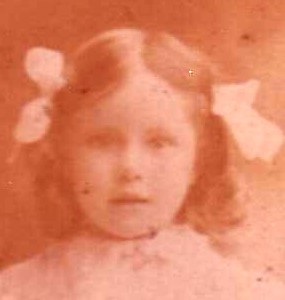
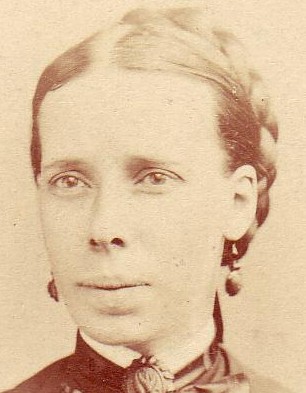
This is a name which has figured in four generations of the Anderson family, with the latest holder Alice Mary being born on August 02 1997. It was a historic month in which to be born: the century's most famous woman, Diana Princess of Wales, was killed only 29 days later. Alice Mary is pictured here at the age of six with her great grandmother Alice (born 1905) in pigtails and her great, great, great grandmother Alice (born 1847). One hundred and fifty years separate the births of the three Alices. Tragically, a fourth Alice died just before her third birthday in 1877.
There's been an Anderson on the launch teams of two groundbreaking newspapers - the Daily Nation in Nairobi (1960) and the Reading Evening Post (1965), described then as the world's most modern newspaper. But we've also worked on the last edition of another - the London Daily News (1987). The family involvement in marketing continues through a consultancy with Dennis Anderson (born 1946) at the helm. Michael Anderson (born 1964) has worked in TV sport.

Giblet soup, roast goose, English plum pudding and Quebec cheese. These were on the menu for Christmas 1927 aboard the Cairn Line cargo steamer Scatwell on her voyage from Hamburg to Canada and back to Rotterdam. George Anderson (1903-1979), seen here on the left with Scatwell shipmates at Hamburg in August 1927, was fourth engineer on the ship but after this voyage transferred to the King Line's brand-new motorship King Edgar as fifth engineer for her first voyage out to Melbourne via the Panama Canal. A highlight of this trip came on April 14 1928 when, as the ship passed close to lonely Pitcairn Island in the South Pacific, home to the descendants of the mutineers from HMS Bounty, a boat was seen putting off from the shore and signalling the King Edgar to stop. About 20 men were in the boat and asked Captain Ellis to take a parcel of mails to Australia as well as requesting some provisions. George Anderson wrote home: "The captain sent them a good supply of stores, amongst other things being a barrel of flour, a cask of salt beef and a bag of biscuits. In return, these islanders sent up baskets of beautiful fruit, one for each member of the crew. I was rather lucky with mine, for on the top was a straw-plaited bag with hand-painted flowers on it, and underneath was the name Pitcairn, so that I have got quite a nice souvenir of the island. As there are not many ships pass so close to the island as we did, I think this day was a red letter one both to them and to ourselves. Before we left they gave us a song." More voyages in the King Edgar and King John followed but in later years George Anderson swapped seagoing for work in the Swan Hunter shipbuilding yard at Wallsend.
The Anderson family has raised several thousand pounds to support the work of the Meningitis Trust in memory of Stuart Anderson, a victim of the disease at the age of only 16 in 1988. Three London Marathon runs have figured in the family's fund-raising work.
Can you help the Meningitis Trust? Click here
Never mind the Anderson crest with the family motto "Stand Sure" - the family is growing distinctive Anderson plants, too. There's thymus Bertram Anderson in the herb garden but the star is the striking tradescantia andersoniana , a spiderwort which features grassy golden leaves and beautiful purple-blue flowers with golden centres. Any more suggestions? Elsewhere in the garden is a nostalgic link with the family's maritime background. Ships of the long-defunct Stag Line of North Shields which were all named after flowers ending in "ia" are remembered in the planting together of camellia, zinnia, linaria, begonia. photinia, euphorbia and others.

A curious family tradition is being maintained by the Andersons. No one knows how it started but it happens just once a year, on Good Friday, and involves a contest where participants hold brightly painted hard-boiled eggs in their hands and crack them against each other until just one emerges unscathed and is declared the winner. The contest is called jarping (again, the family don't know why) and for some reason the eggs are all painted in the image of a Chinese man, the only difference being that each egg features differently coloured versions of the same clothing. Neil Anderson's winning egg from the 2004 contest is pictured here.

The Andersons are still "afloat" in the 21st Century, working to restore one of Britain's lost canals. Sylvia and Roy Anderson are members of the Shrewsbury & Newport Canals Trust, which aims to reconnect the historic Shropshire county town of Shrewsbury with the national canal network in an £86 million scheme which a feasibility study has confirmed as achievable. The Andersons (pictured second and fourth from left) were members of a working party which interrupted clearance work on the canal bed and towpath to pose for this historic restoration picture at Wappenshall Junction, near Wellington, in February 2006 - the first fingerpost to be erected.